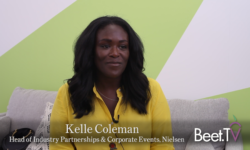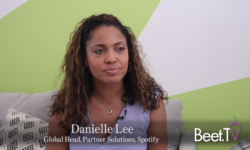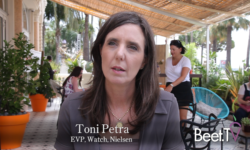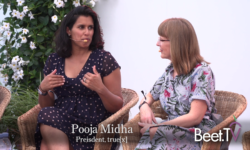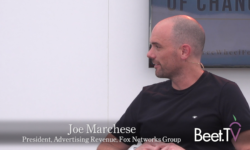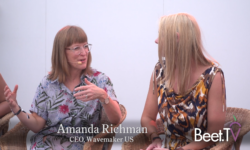CANNES – At gatherings like the Cannes Lions International Festival of Creativity, audience segmentation strategies have been been front and center for the past few years. “I think now that a lot of learning discussions have come out we’ve come back to if you do that type of targeting, what are you going to say to these unique groups,” says MediaLink Managing Partner Matt Spiegel.
“So now we’re talking about what’s the right messaging format, how do you tell interesting stories,” Spiegel adds in this interview with Beet.TV at the recently concluded Cannes Lions 2018.
Such discourse generates lots of discussion about, among other things, interesting new ad formats, the role of engagement ads in television, more precise micro segmentation and ad sequencing.
There’s another side to the coin that is a rapidly changing television landscape, according to Spiegel. “The business of television is certainly dealing with figuring out how to equal itself as a platform at scale, much like you’d see from Google and Facebook. In many ways, television today already drives more scale, but for marketers they want to figure out how can I buy against many audiences in one simple way.”
A lot of what was talked about at Cannes is how the business of television is “evolving to do that, and how are the various traditional competitors playing enough together to enable that. I think that’s a good hot topic as well,” says Spiegel.
On the subject of ad loads, keep all eyes on consumers, because “millions and millions” have voted that they prefer an ad-free experience.
“The dichotomy from ad-free on hand to the traditional broadcast model on the other, which is as much as twenty percent out of an hour of content is commercials, is the other extreme. I think that choice for consumers is pretty easy.”
So there’s little doubt that the “ecosystem of media companies” understand that they need to shorten formats, create new ad experiences and rethink how they make the exchange between content and advertising. What will the impact be on media company revenue?
“I don’t think that’s fully solved. I don’t think anyone would tell you on the sales side that they have that question fully answered. But I think they realize they’re going to have to experiment,” Spiegel says.
“And maybe there might be some short-term up and down pain, but I think there’s also the reality that marketers are willing to potentially pay more for things when they have less clutter and they’re more engaging.”
Proving paying more is worth it falls to measurement, particularly when it comes to marketers’ procurement teams.
“You’ve got to bring procurement departments along to make sure it’s not only about cheaper, it is actually about more effective,” Spiegel says. “These things are alright and I think we’re going to get there, but I think as you point out we’re in for probably some years of some bumpiness as those revenue shifts kind of shake out.”
This video is from a series of videos and sessions produced in partnership with FreeWheel at Cannes 2018 as part of the FreeWheel Forum on the Future of Television. You can find more videos from this series here.






